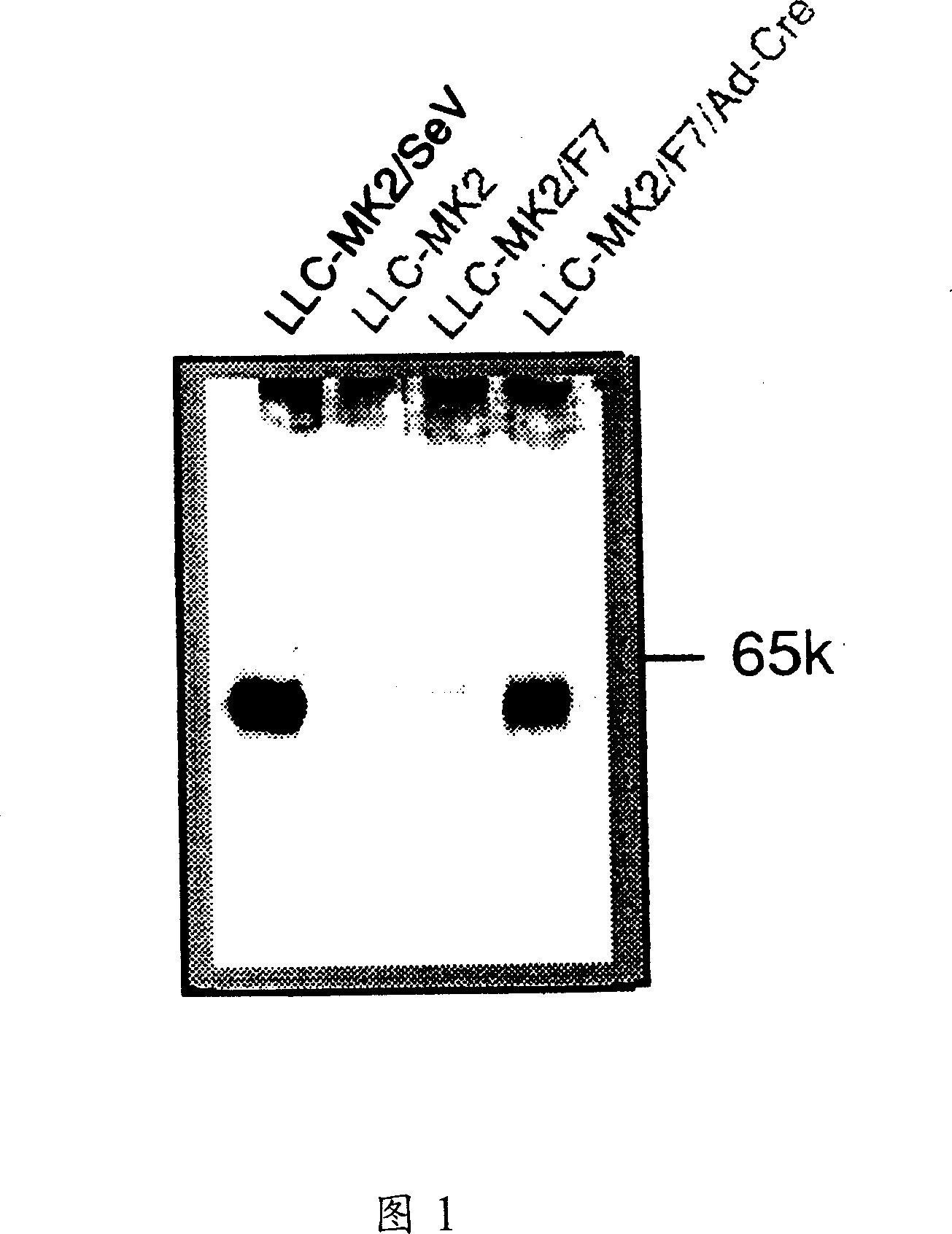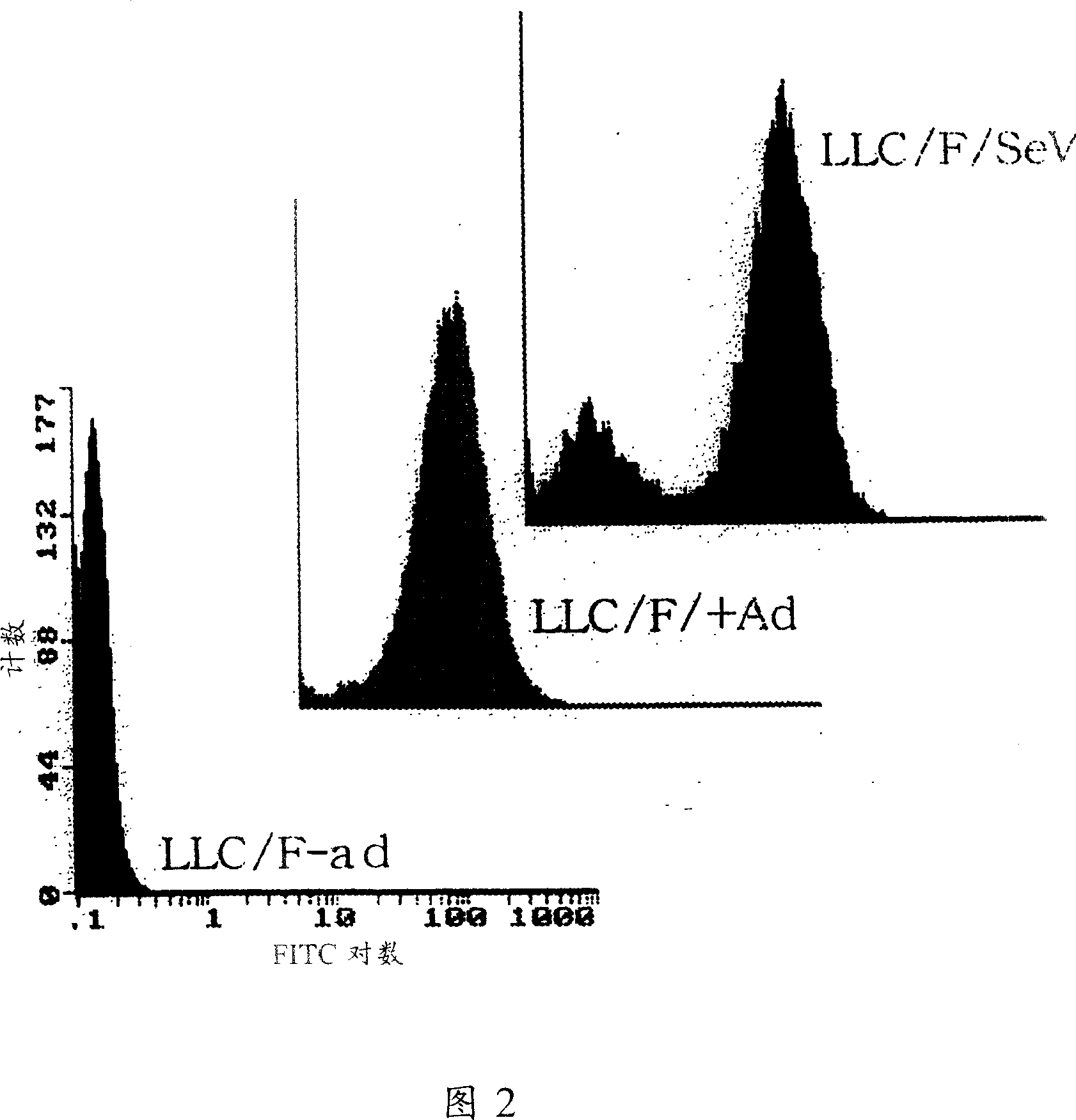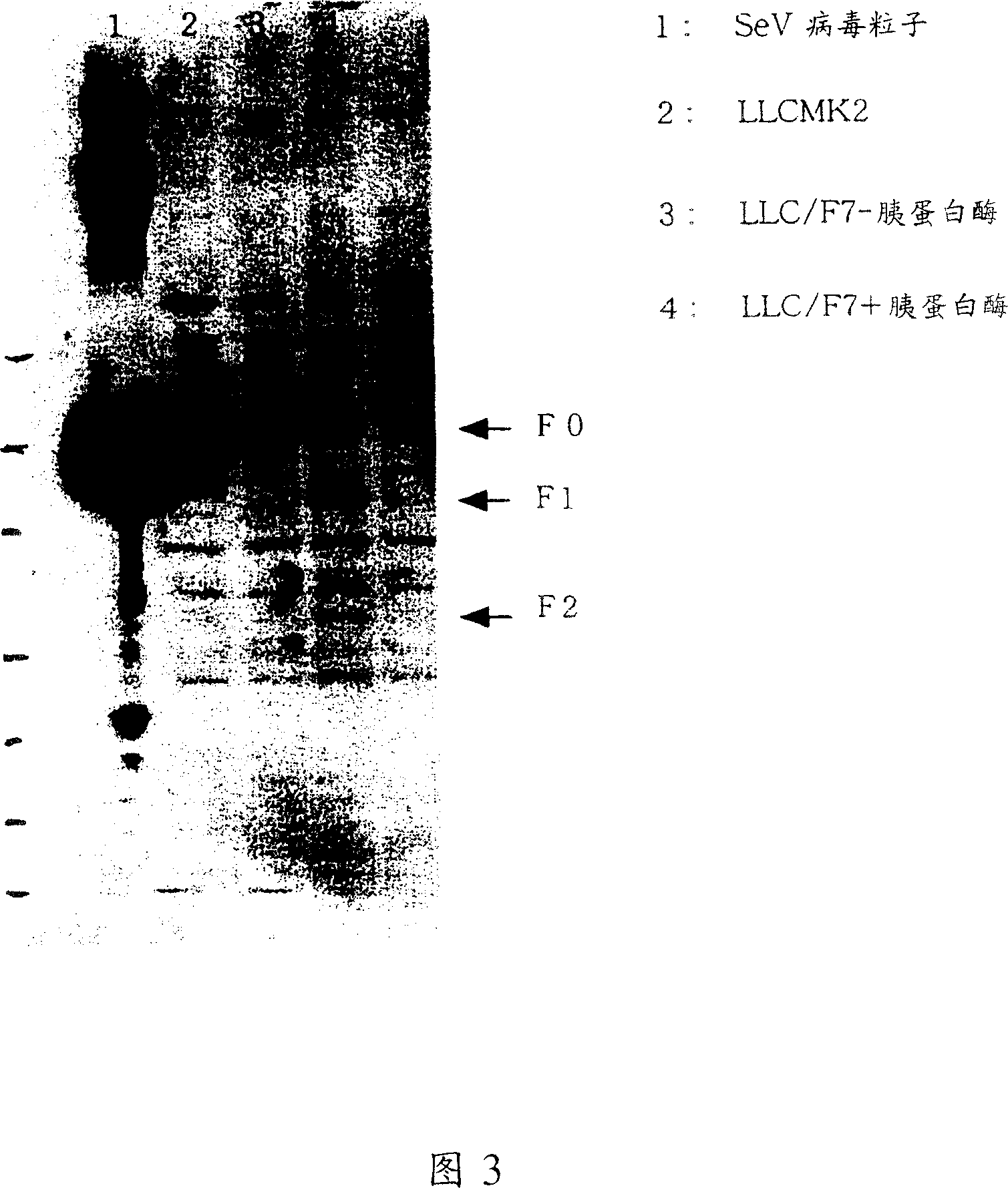Paramyxorividae virus vector defective in envelope gene
A paramyxovirus, virus vector technology, applied in the direction of virus/phage, vector, virus, etc., can solve the problem of unsuccessful and achieve the effect of high gene transfer efficiency
- Summary
- Abstract
- Description
- Claims
- Application Information
AI Technical Summary
Problems solved by technology
Method used
Image
Examples
Embodiment 1
[0149] [Example 1] Construction of F-deficient Sendai virus
[0150] Construction of F-deficient SeV genome cDNA and plasmid expressing F
[0151] The full-length genomic cDNA of Sendai virus (Sev), pSeV18+b(+) (Hasan, M.K.et al., 1997, J.General Virology 78:2813-2820) was digested with SphI / KpnI ("pSeV18+b(+) "also called "pSeV18+"), the resulting fragment (14673bp) was recovered and cloned into pUC18, which was called plasmid pUC18 / KS. Its F-deficient site was constructed on PUC18 / KS. Combining the PCR-ligation method for F gene deficiency, the result was that the ORF of the F gene was removed (ATG-TGA=1698bp); and ligated with atgcatgccggcagatga (SEQ ID NO: 1) to construct the F-deficient SeV genome cDNA (pSeV18+ / ΔF). In the PCR, the PCR product upstream of the F gene generated by the primer pair (forward: 5'-gttgagtactgcaagagc / SEQ ID NO: 2, reverse: 5'-tttgccggcatgcatgtttcccaaggggagagttttgcaacc / SEQ ID NO: 3) was ligated with EcoT221 to the On the PCR product downstream...
Embodiment 2
[0163] [Example 2] Confirmation of the function of SeV-F protein expressed by helper cells
[0164] To test whether the SeV-F protein induced by helper cells maintains the original function of the protein.
[0165] After LLC-MK2 / F7 was placed in a 6 cm dish and grown to confluence, cells were infected with adenovirus AxCANCre at moi=3 according to the method of Saito et al. Then in MEM (serum-free) containing adenase (7.5 μg / ml; GIBCOBRL) at 37°C and 5% CO 2 The cells were cultured under gas for three days.
[0166] The culture supernatant was discarded and the cells were washed twice with PBS buffer, detached with a scraper and centrifuged at 1500xg for five minutes to collect the cells. Cleavage of expressed F protein was verified by Western blotting as described above (Fig. 3). SeV-F is first synthesized from F0 as an inactive protein precursor, and then activated by cleavage into two subunits F1 and F2 under the action of trypsin. After induction of F protein expressio...
Embodiment 3
[0167] [Example 3] Formation of functional RNP and virus particles containing F-deficient genome
[0168] When recovering viral particles of a defective virus, it is necessary to use cells expressing the defective protein. However, when cells expressing the defective protein were used to recover the defective virus, it was found that the expression of the F protein using the helper cell line was rapidly terminated due to the vaccinia virus used in the reconstitution of the F-deficient SeV (Fig. Reconstitution of helper cell lines directly supplied with F protein-based viruses failed. Treatment of vaccinia virus with long-wavelength ultraviolet light (long-wave UV) in the presence of psoralen (PLWUV treatment) has been reported to inactivate the replication capacity of vaccinia virus without compromising the activity of T7 expression (Tsung et al., J Virol 70, 165-171, 1996). Therefore, viral reconstitution was attempted using PLWUV-treated vaccinia virus (PLWUV-VacT7). Ultr...
PUM
 Login to View More
Login to View More Abstract
Description
Claims
Application Information
 Login to View More
Login to View More - R&D
- Intellectual Property
- Life Sciences
- Materials
- Tech Scout
- Unparalleled Data Quality
- Higher Quality Content
- 60% Fewer Hallucinations
Browse by: Latest US Patents, China's latest patents, Technical Efficacy Thesaurus, Application Domain, Technology Topic, Popular Technical Reports.
© 2025 PatSnap. All rights reserved.Legal|Privacy policy|Modern Slavery Act Transparency Statement|Sitemap|About US| Contact US: help@patsnap.com



